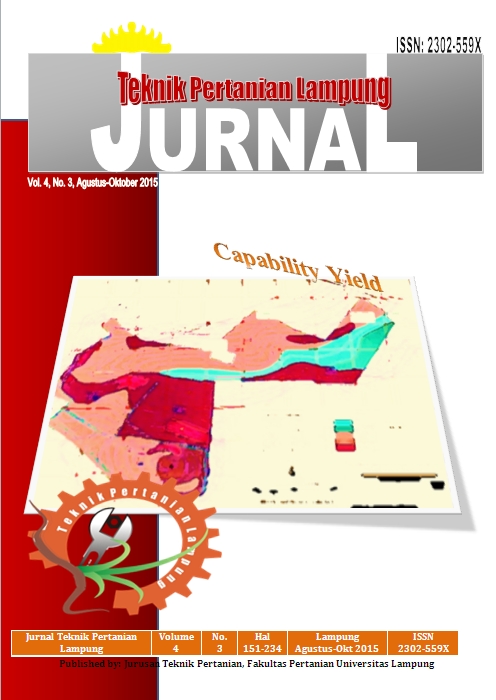THE EFFECT OF LIGHTING LENGTH WITH LED AND FLUORESCENT LAMPS COMBINATION ON THE GROWTH AND PRODUCT OF PAKCOY (Brassica rapa L.) WITH WICK SYSTEM HYDROPONICS
DOI:
https://doi.org/10.23960/jtep-l.v4i3.%25pAbstract
This research aimed to find out the lighting length of the combination LED and fluorescent lamps combined,suitable to growpakcoy (Brassica rapa L.)withwick systemhydroponics. The research used five treatments: sun
lighting as a control (P0), and artificial lighting of 36-watt LED combined with 42-watt fluorescent lamps. Sun
lighting represented a conventional cultivation, with normal lighting period (±12 hours per day), while the
artificial lighting consisted of four different lighting lengths per day: 8 hours (P1), 12 hours (P2), 16 hours (P3)
and 20 hours (P4). The artificial lighting experiments were placed in boxes as the growth chambers, while the
regular sunlighting treatmentwas placed inan outdoorminigreenhouse. Each treatment consisted of four plants,
so there were 20 plants in total. The results showed that 20-hour treatment of 36-watt LED lamp plus 42-watt
fluorescent lighting (P4) was the best among the other artificial lighting treatments, but still less optimal as
compared to the treatment of natural sun lighting (P0). The plants grew in treatmentP4 still showed etiolating,
indicating possibility of using higher power than 36-watt LED lamp and 42-watt fluorescent, although the length
of lighting reached 20 hours. Yet, in termof quality, the mineral/ash content of all treated plants was notmuch
different.
Keyword : LED lamp, fluorescent lamp, lighting, pakcoy,wick systemhydroponics.
Downloads
Published
2015-10-30
Issue
Section
Articles
License
- Authors who publish with this journal agree to the following terms:
- Authors retain copyright and grant the journal right of first publication with the work simultaneously licensed under a Creative Commons Attribution-ShareAlike 4.0 International Lice that allows others to share the work with an acknowledgement of the work's authorship and initial publication in this journal.
- Authors are able to enter into separate, additional contractual arrangements for the non-exclusive distribution of the journal's published version of the work (e.g., post it to an institutional repository or publish it in a book), with an acknowledgement of its initial publication in this journal.
- Authors are permitted and encouraged to post their work online (e.g., in institutional repositories or on their website) prior to and during the submission process, as it can lead to productive exchanges, as well as earlier and greater citation of published work (See The Effect of Open Access).
Jurnal Teknik Pertanian Lampung

JTEPL is licensed under a Creative Commons Attribution-ShareAlike 4.0 International License.

